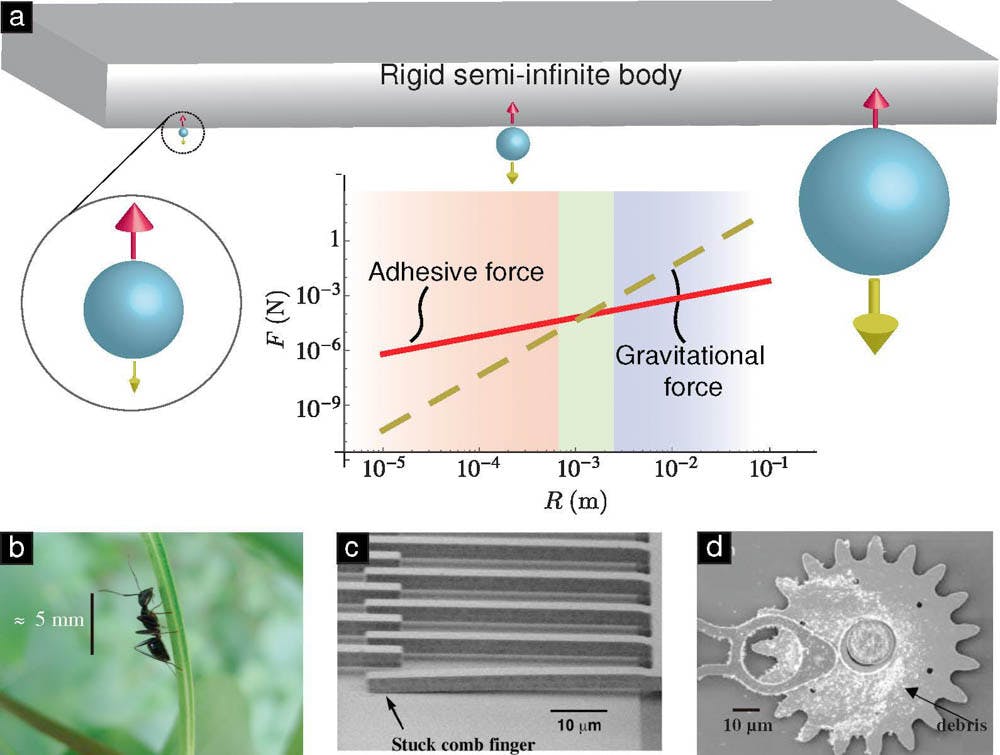Two university researchers, Haneesh Kesari, an assistant professor of engineering, and Weilin Deng GS, the lead author of the study, recently discovered that extremely small differences in surface roughness affect adhesion, or the way these surfaces will stick together.
To reach their finding, Kesari and Deng studied van der Waals forces, which Kesari compared to the throwing and catching of a ball. When two people are throwing a ball back and forth with a certain frequency, the two people interact without touching each other, Kesari said. Much like this interaction, van der Waals forces are an indirect interaction between particles.
Van der Waals forces affect miniscule particles comparably to how gravity affects larger objects. In fact, the similarity between the two forces can be seen in their mathematical formulas, which have similar denominators.
The forces of gravity and van der Waals will compete to dominate each other; with smaller objects, van der Waals will overcome gravity. “In a way, gravity starts disappearing and adhesion becomes dominant at the nanoscale,” Kesari explained. The ability of geckos to climb walls can be explained by the dominance of van der Waals forces in their fibrils. This dominance helps geckos adhere to surfaces.
Kesari modeled this study to follow up on his earlier work at Stanford, where he tested adhesion at the nanoscale. Deng, a PhD student in solid mechanics, derived an equation that fit the observed data as well as those of earlier work conducted by other researchers.
For years scientists have observed similar phenomena as those witnessed by University researchers, but they misidentified the causes for their results.
For instance, scientists previously believed that the magnitude of van der Waals forces depended only on the separation of particles and not on whether they were moving toward or away from one another. As a result, when earlier research observed a difference in magnitude of the van der Waals forces with the direction of particle movement, scientists attributed their results to errors such as incorrect instrument readings due to moisture and viscosity.
Ultimately, through their research, Kesari and Deng proved that what were once thought to be experimental mistakes were actually phenomena inherent to the tested surfaces.
The researchers named this theory “depth-dependent hysteresis,” a modification to its earlier title “depth-independent hysteresis.” In the context of this work, hysteresis refers to the amount of energy lost when surfaces approach or retract from one another. The term depth-dependent acknowledges the relationship between the magnitude of present van der Waals forces and the direction of particle movement.
Pradeep Guduru, a professor of engineering at the University who primarily studies contact mechanics of soft materials, said Kesari and Deng’s research “makes a significant step in quantifying and predicting the role of roughness in soft material contact.”
Their research will likely benefit and develop many fields, including nanoscale engineering. For instance, medical professionals can use this research to control the scale of adhesion between a medical device and the surrounding soft tissue, Guduru added. Other applications for the work include using “nano-patterned surfaces to make solar panels that resist dust build-up, which robs them of their efficiency,” Deng said.
In future studies, the researchers plan to use large-scale numerical simulations to study how adhesion depends on small-scale surface structures. They envision a future where technology allows a person to create surfaces with tailored physical properties simply by changing the design of the solid surface.





